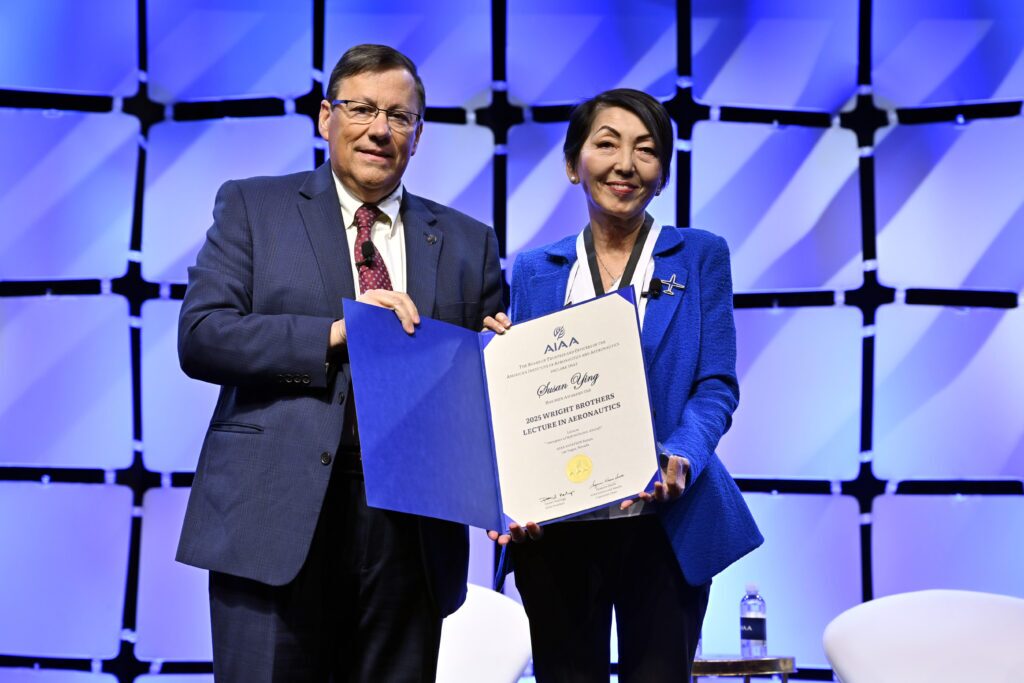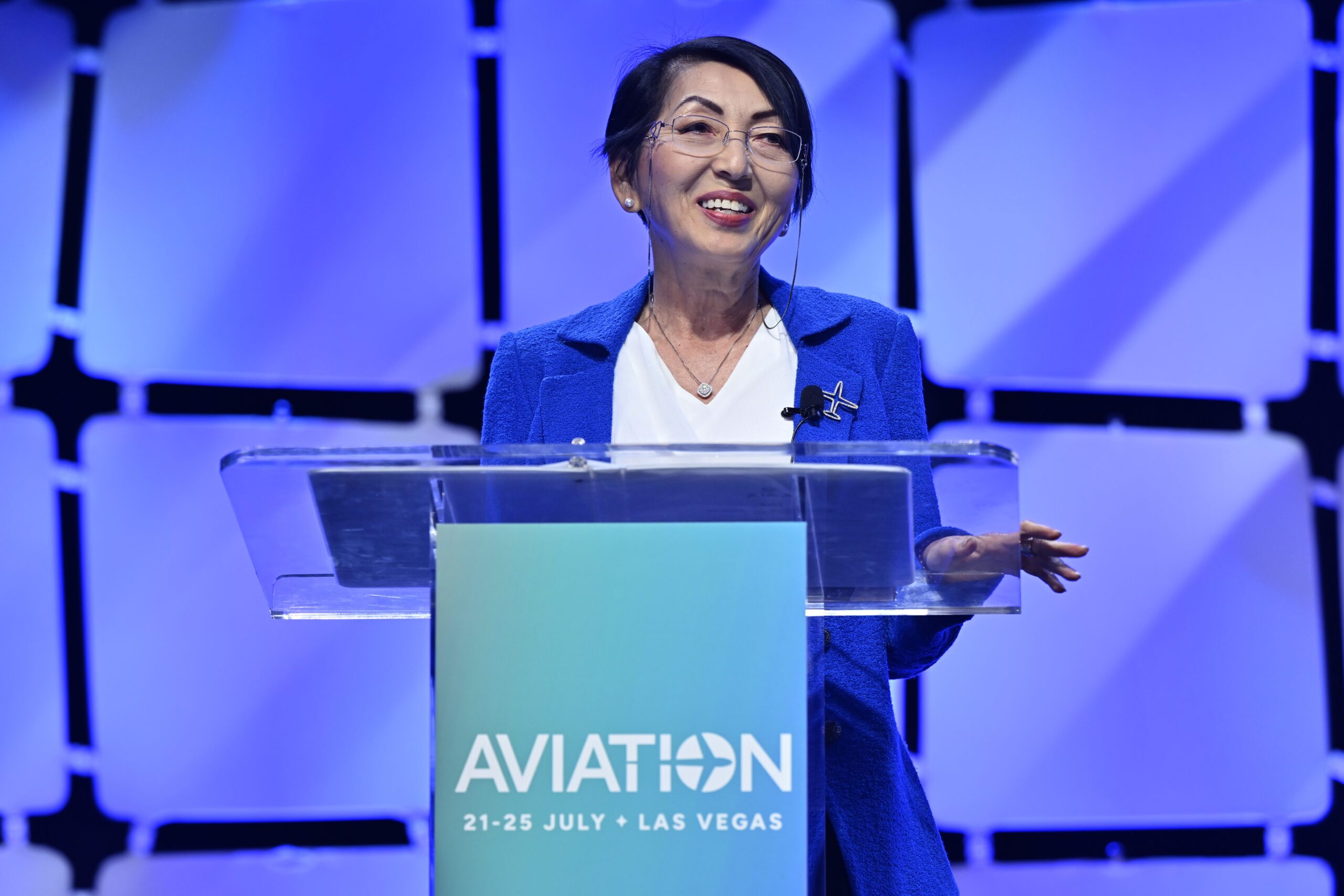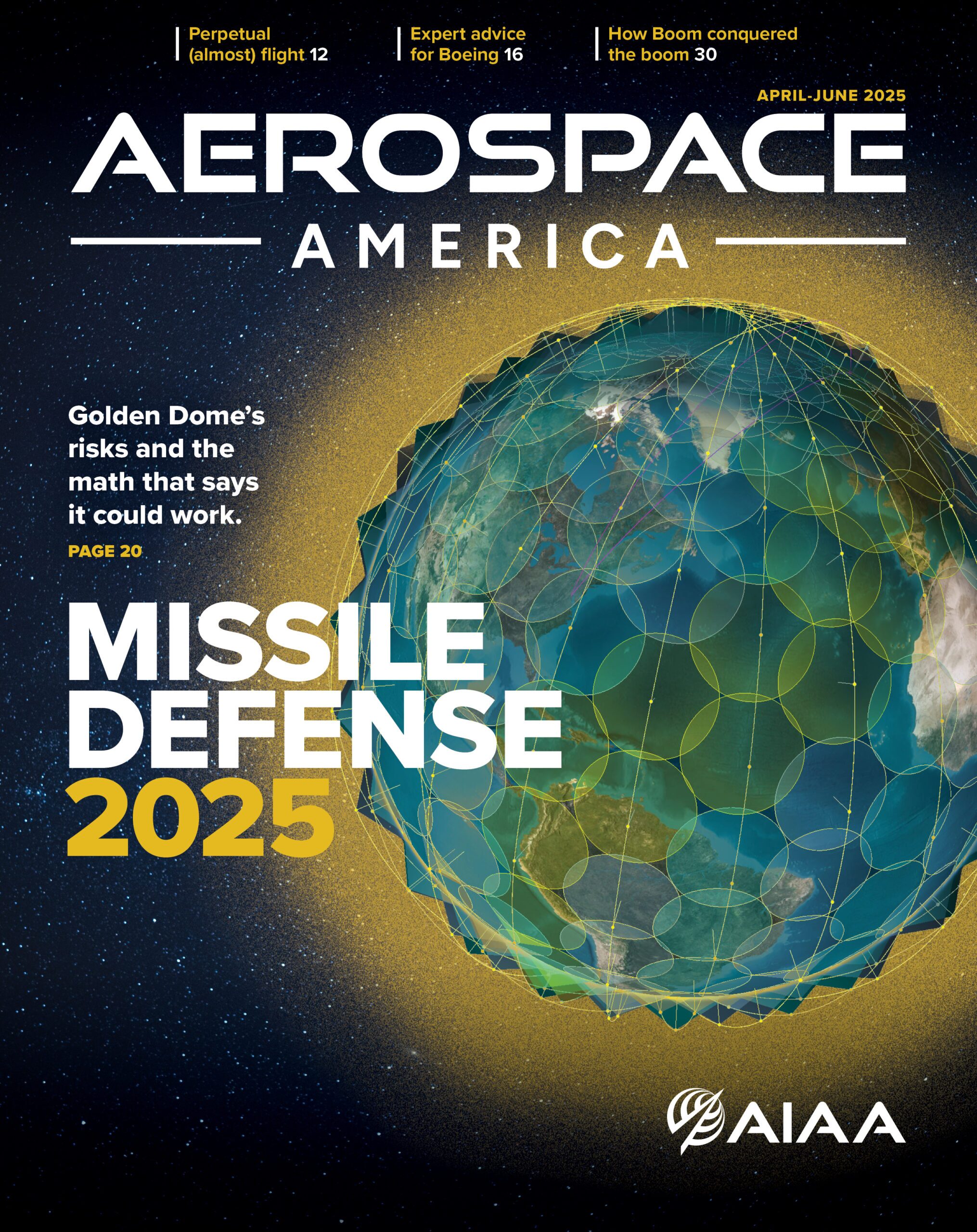Aircraft powered by hybrid-electric engines can bridge the gap between today’s fossil-fuel jets and tomorrow’s zero-emission aircraft, said Susan Ying, CEO of AMP2FLY, during the 2025 AIAA Wright Brothers Lecture in Aeronautics. As the name connotes, hybrid-electric aircraft combine internal combustion fuel with electricity from batteries.
Ying, an AIAA Fellow, used the lecture during the 2025 AIAA AVIATION Forum in July to unveil a practical roadmap for hybrid-electric flight for commercial aviation that will help achieve near net-zero emissions by 2050 and provide cleaner flights for short-hop routes for commercial success “within a few years.”
The first woman to receive the AIAA Wright Brothers Lectureship in Aeronautics, Ying drew on her four decades in aeronautics to describe the progress and journey to the “Emergence of Hybrid Electric Aircraft.”
She provided a compelling and tantalizing narrative of Ampaire Inc.’s work to commercialize hybrid-electric aircraft since 2019. She envisions a future alternative to the impractical all-electric commuter aircraft: hybrid systems that pair high-power electric motors with a conventional engine.
“We finally chose the combined electric and combustion engine for the takeoff and climb part of the mission. One of the primary reasons is that electric energy use in this case is the lowest and …. what we really have is the peak … combustion engine for the better efficiency and also the highest payload and range,” she said.
Its development, though, hinges on rapid iteration. A modular test rig validates cell-level power electronics, a ground integration rig tests systems interaction, and a flying testbed – a modified Cessna 337 push-pull twin from an aircraft boneyard – lets engineers bench, integrate, and fly new hardware in months rather than years, Ying said.
Flight evaluations began in Hawaii, where short-hop interisland routes parallel the aircraft’s intended commercial mission. Partnering with local carriers and Elemental Excelerator, Ampaire demonstrated up to 40% fuel-cost savings, she noted.
UK demonstrations under UK Research and Innovation sponsorship followed, and in June 2024 the team set a world record: a 1,375-mile nonstop hybrid flight from Mojave, California, to Oshkosh, Wisconsin, on a single battery charge topped by a portable diesel generator. It now has logged more than 30,000 miles using hybrid technology, Ying said.

In March 2025, the company achieved an historic regulatory milestone: the FAA granted its hybrid-electric propulsion system a G1 certification basis— the first hybrid-electric system ever to earn that regulatory green light—setting a precedent for the industry and dramatically reducing program risk.
Looking forward, Ampaire has selected an “optimized integrated-parallel” hybrid architecture—similar, she said, to automotive systems in the Honda Civic Hybrid—to retrofit nine-seat and 19-seat turboprops, with scalability to larger regional transports. The company’s vision charts a new single-aisle, single-aft-engine hybrid airliner with distributed electric propulsion units along the wings. The design evokes NASA’s “Subsonic Single Aft-Engine Electrofan,” or SUSAN, concept.
Ying cautioned that all-electric flight will remain confined to very short-range and low-speed missions until batteries and motors achieve dramatic breakthroughs. Hybrids, she argued, are the “practical and compelling” bridge: they reduce demand on sustainable aviation fuel, allow airports to roll out charging infrastructure in stages, and deliver immediate emissions reductions.
Ying also addressed infrastructure challenges working with airports to manage megawatt-scale charging, battery end-of-life reuse, and the commercial viability of hybrid systems. She predicted that the company could achieve commercial entry “within a few years,” and underscored the importance of industry, academic and regulatory collaboration.
“Let’s fly hybrid electric—and let’s fly sustainably,” Ying concluded, urging the aviation community to embrace hybrid propulsion as the fastest path to net-zero emissions by 2050.
The AIAA Wright Brothers Lectureship in Aeronautics commemorates the accomplishment of the Wright Brothers in creating the first practical airplane and also recognizes the success of their approach to problem-solving – beginning with study of the literature and including innovative thinking, constructive debate, systematic testing, and teamwork. In particular, the Wright Brothers Lectureship is awarded for the recent accomplishment of a significant “First in Aeronautical Engineering.” The lecture highlights the details of the accomplishment and the approaches to meeting both the technical and programmatic challenges involved.




